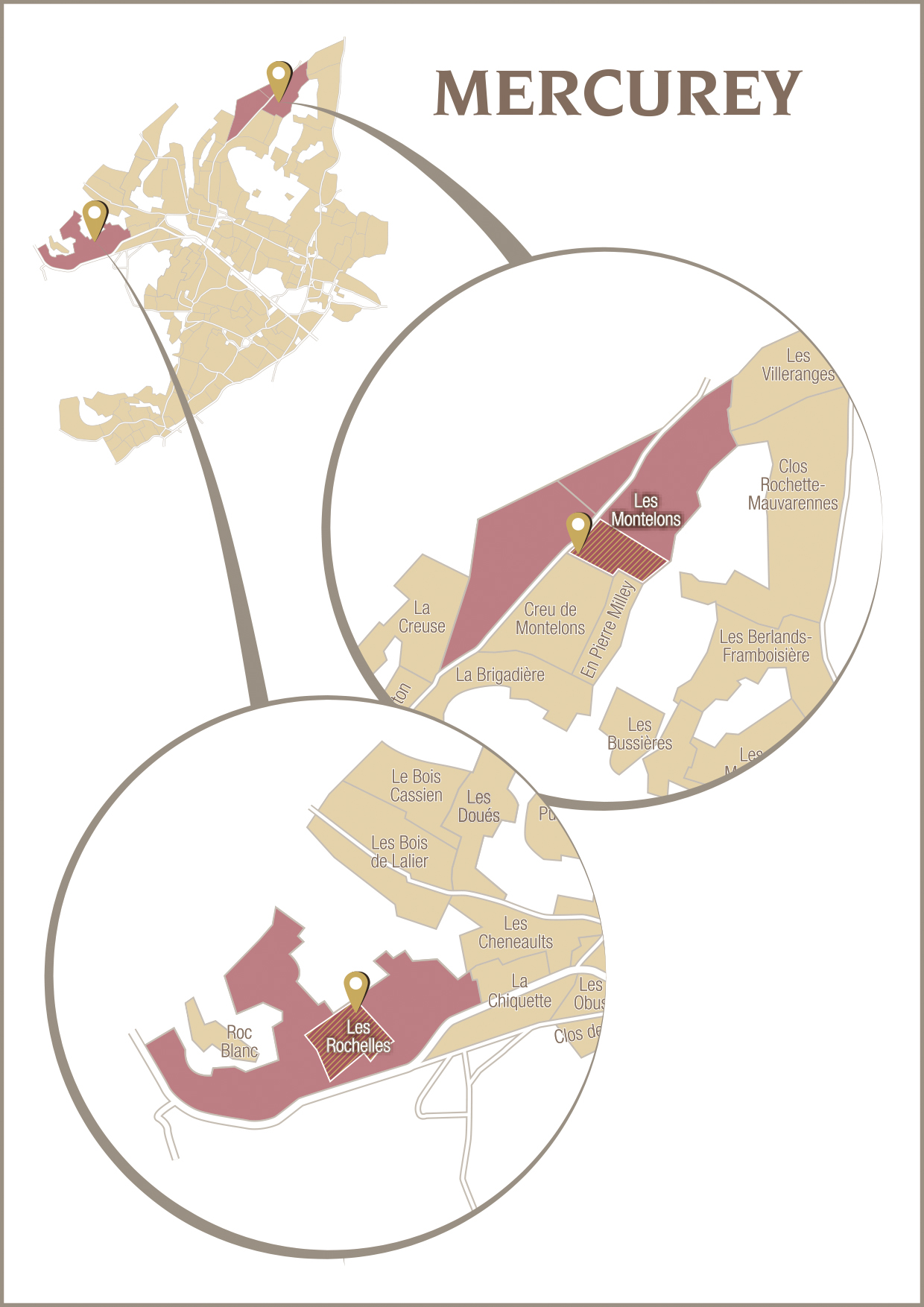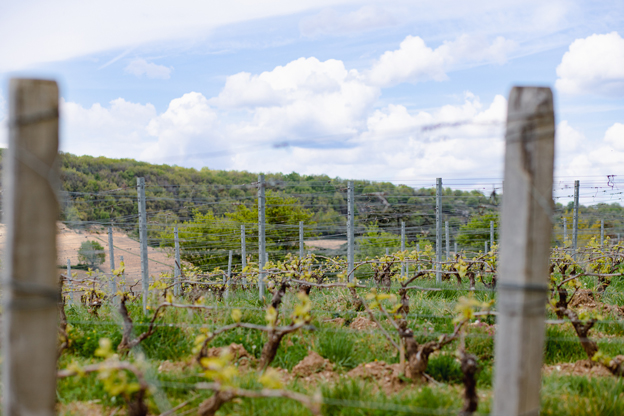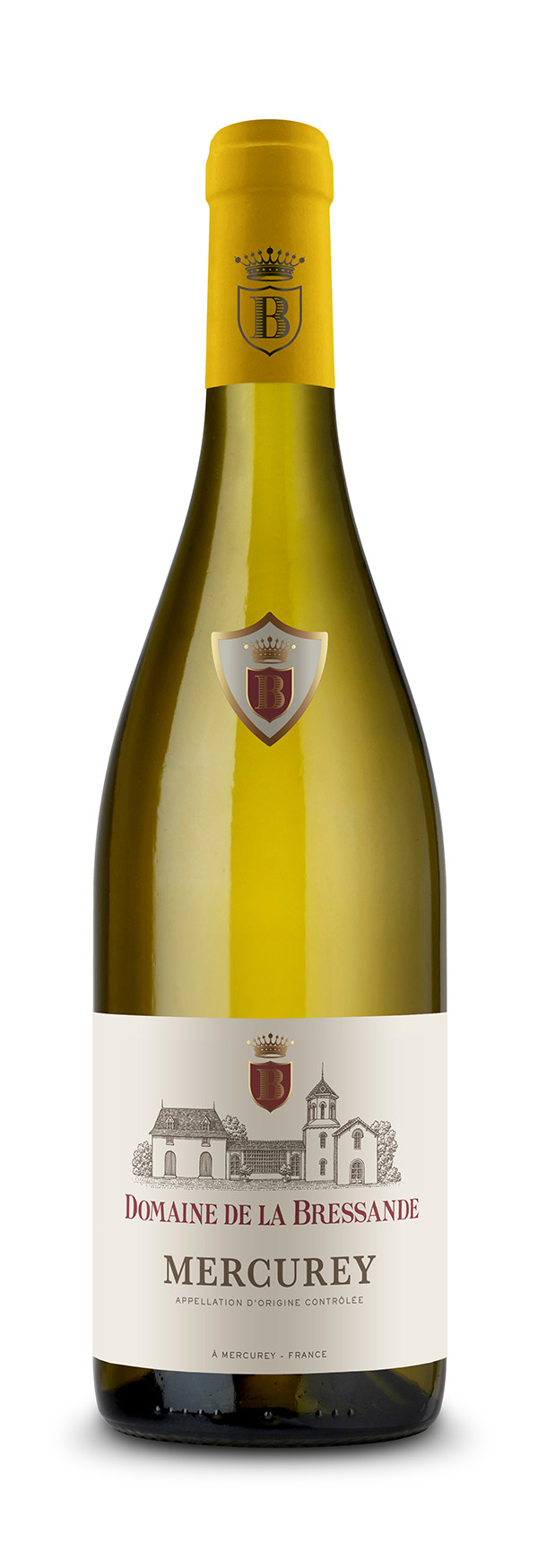MERCUREY 2019
Grape Variety
100% Chardonnay.
Tasting notes
Colour: deep yellow.
Nose: fine wood with intense aromas of yellow fruit (apricot) and white flowers.
Palate: a well-balanced wine with plenty of texture and tension, still with mixed aromas of fruit and white flowers.
Food and wine pairing
This wine goes well with fish or snails, in cream sauce, white meats in cream sauce, fine cheese.
Serving suggestions
Drink ideally at a temperature of about 12-14°C (54-57°F.).
Ageing potential
Already delicious, this great white Burgundy can age 5 years.
Origin
In 1923, the civil court of Chalon-sur-Saône instituted, by judgment, the appellation d’origine mercurey, allowing it to become one of the three oldest appellations of Burgundy.
In the Côte Chalonnaise, Mercurey has always enjoyed an excellent reputation.
This appellation has 31 climates classified in "premiers crus". Located to the north of the Côte Chalonnaise, more than 90% of the wine produced under the Mercurey name is red. A total of 543 hectares, of which 148 are Premiers Crus. As for the white wines, they represent 106 hectares, including 18 classified as Premiers Crus.
The village of Mercurey owes its name to the Romans who, during the occupation of the region, built a temple in homage to Mercury, God of commerce and finance.
The vineyard estate extends now over 21 hectares and offers 3 upper quality wines from the appellation of Mercurey. White wines: Mercurey (3 ha), red wines: Mercurey (7.50 ha) and Mercurey 1er Cru En Sazenay (1.75 ha).
Terroir
- Vineyard area: 3 Ha (7.41 acres).
- Vines age: around 21 years.
- Soil: Sol clay calcaire.
Vinification and maturing
Harvested on September 21th (hand-picked).
Pneumatic pressing followed by a cold settling between 16 and 24 hours, with the aim of eliminating the coarse bourbes (solid particles from the skin, stalks, skins, impurities that settle by sedimentation).
Alcoholic fermentation in thermo-regulated stainless steel vats for precise temperature control and homogeneity of the cuvée, followed by racking at the end of fermentation. Aging of the wines in 228 litre barrels (20% new barrels) on fine lees for 9 months.
Stirring: twice a month until malolactic fermentation (beginning of January) in order to develop complex aromas and preserve the purity of the fruit, to protect the wine from oxidation (barrel wall and bung hole) but also from reduction (accumulation of deposits, sometimes sulphurous, in the bottom of the barrel or vat), by putting the fine lees back into suspension.
Vintage : 2019
Winter was mild across whole Burgundy. Bud break started early April in our Domaine’s vineyards.
On April the 5th, a significant frost-freeze made damages in several plots. The villages of Rully and Mercurey were then less affected by a second freeze wave that occurred from the 13 to 14th of April, as the growers and people organized smoke screens to protect the vineyards.
The first grapes bunches appeared around the 20th of April.
Spring maintained damp but cold overall, during the whole month of May until flowering which began mid-June (10-15 of June.). This type of weather provided coulure and a very slow vegetative development of the vine.
Summer was then very hot (heatwave) and dry and causes “millerandage”.
Harvest took place in our estates from the 9th to the 24th of September under a radiant sun. The grapes showed good maturity and perfect balance. Throughout our estates volumes were down around 30%, with some plots more affected than others.


